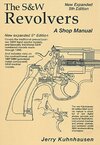nettlle
Contributing Member
May late father-in-law gave me this pistol decades ago and I have kept it stored. Being retired now I want bring it out of storage and start shooting it. It needs a good cleaning. I am having a hard time finding any information on disassembly for cleaning and am looking for any books or links that would help.





